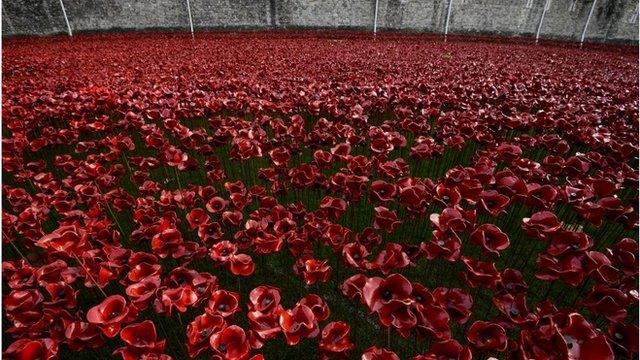Tower of London poppies tour: North of England to host displays
- Published
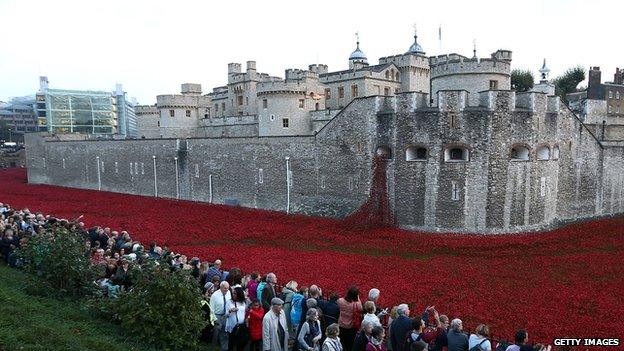
More than five million people saw the Tower or London display in 2014
Thousands of ceramic poppies used in the Tower of London installation are to go on display across the north of England, it has been announced.
The cascade - or weeping window - section will be shown at St George's Hall in Liverpool and Woodhorn Museum, Northumberland.
Yorkshire Sculpture Park will host the arch segment, also known as the wave.
The installation, which marked 100 years since the start of World War One, drew more than five million visitors.
Culture Secretary John Whittingdale said: "This is art at its most powerful and it is only right that everyone should have the chance to see them."
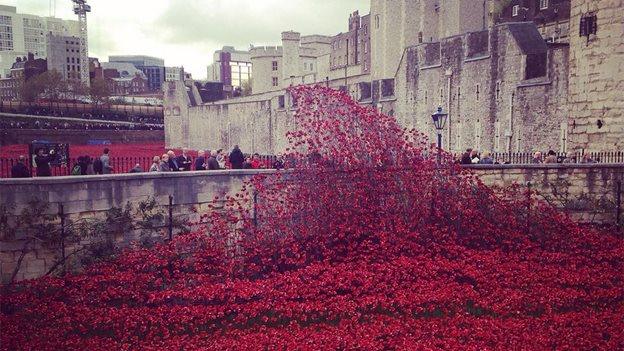
Yorkshire Sculpture Park will host the arch segment, also known as the wave
The installation included 888,246 ceramic poppies, with each representing each death in the British and Colonial forces between 1914 and 1918.
It was created by Derbyshire artist Paul Cummins and theatre designer Tom Piper, and was named Blood Swept Lands and Seas of Red after a line written by a soldier who died in Belgium.
A total of £9m was raised for six military service charities after most of the poppies, which were handmade in Derby, were sold to members of the public for £25 each.
Wave and the Weeping Window, which together have more than 10,000 ceramic poppies, were bought for the nation, external last year by the charities Backstage Trust and the Clore Duffield Foundation.
Other locations can bid next year to host the ceramic poppies in 2017 and 2018, external, before they are permanently homed at the Imperial War Museums in London and Manchester.

2015 locations
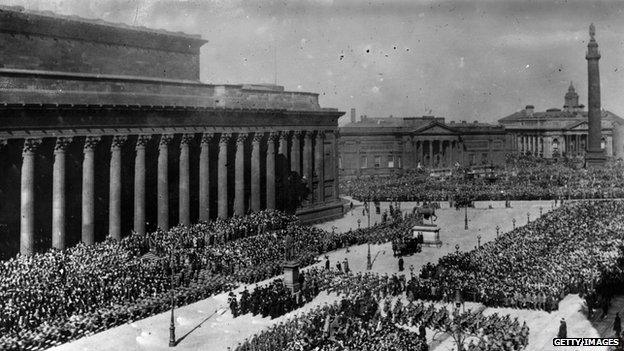
12,000 men paraded outside St George's Hall, Liverpool in 1915 in front of Earl Kitchener who was secretary of state for war
Wave: Yorkshire Sculpture Park, Wakefield, September 2015 - January 2016
The site has 500 acres of parkland and five galleries
The Yorkshire Regiment raised 24 Battalions served by 65,000 men, of whom 9,000 died.
Weeping Window
Woodhorn Museum, Northumberland, September - October 2015
Woodhorn Colliery played an important part in the war effort, not only for coal production, but also supplying miners for the front
St George's Hall, Liverpool, November 2015 - January 2016
The civic building was used to hold WW1 recruitment rallies with War Secretary Earl Kitchener appealing for men to sign up with friends and neighbours in 'Pals battalions'
Source: 14-18 Now

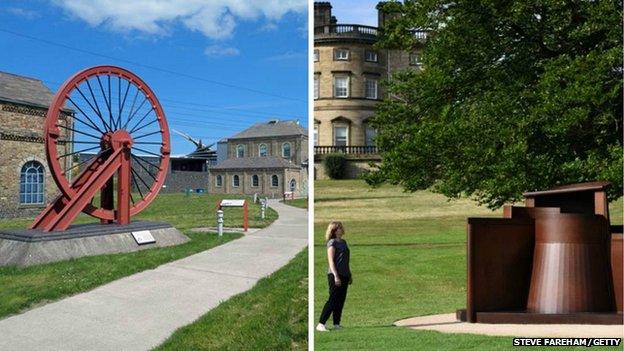
The ceramic poppies will also be displayed at Woodhorn Museum and Yorkshire Sculpture Park

World War One Centenary
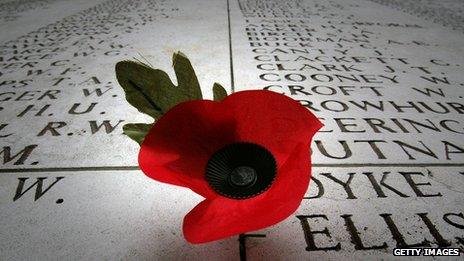

- Published9 November 2014
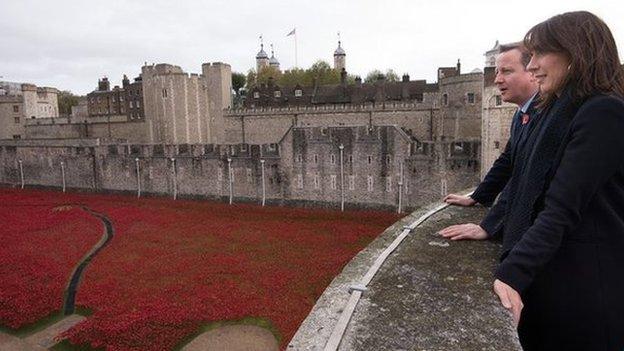
- Published5 August 2014
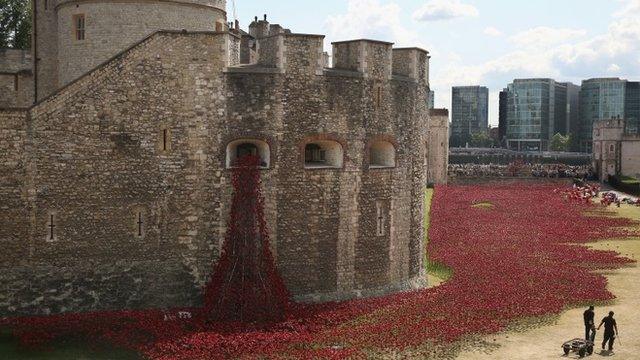
- Published11 November 2014
